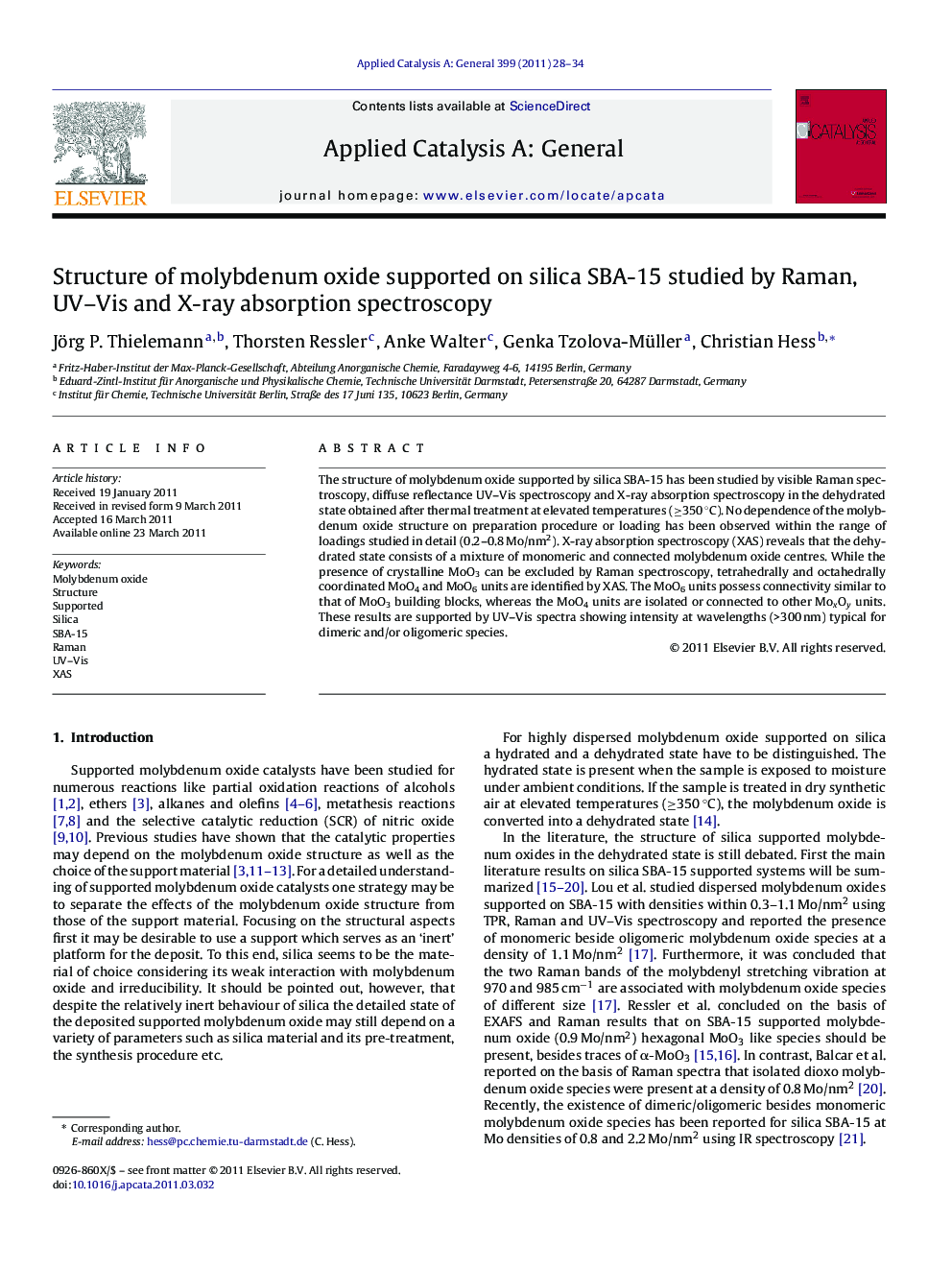| Article ID | Journal | Published Year | Pages | File Type |
|---|---|---|---|---|
| 41425 | Applied Catalysis A: General | 2011 | 7 Pages |
The structure of molybdenum oxide supported by silica SBA-15 has been studied by visible Raman spectroscopy, diffuse reflectance UV–Vis spectroscopy and X-ray absorption spectroscopy in the dehydrated state obtained after thermal treatment at elevated temperatures (≥350 °C). No dependence of the molybdenum oxide structure on preparation procedure or loading has been observed within the range of loadings studied in detail (0.2–0.8 Mo/nm2). X-ray absorption spectroscopy (XAS) reveals that the dehydrated state consists of a mixture of monomeric and connected molybdenum oxide centres. While the presence of crystalline MoO3 can be excluded by Raman spectroscopy, tetrahedrally and octahedrally coordinated MoO4 and MoO6 units are identified by XAS. The MoO6 units possess connectivity similar to that of MoO3 building blocks, whereas the MoO4 units are isolated or connected to other MoxOy units. These results are supported by UV–Vis spectra showing intensity at wavelengths (>300 nm) typical for dimeric and/or oligomeric species.
Graphical abstractFigure optionsDownload full-size imageDownload high-quality image (111 K)Download as PowerPoint slideHighlights► Dispersed molybdenum oxide consists of monomeric and connected species. ► For the loadings studied no dependence on preparation or loading is observed. ► Raman, UV–Vis and XA spectroscopy provide complementary structural information.
